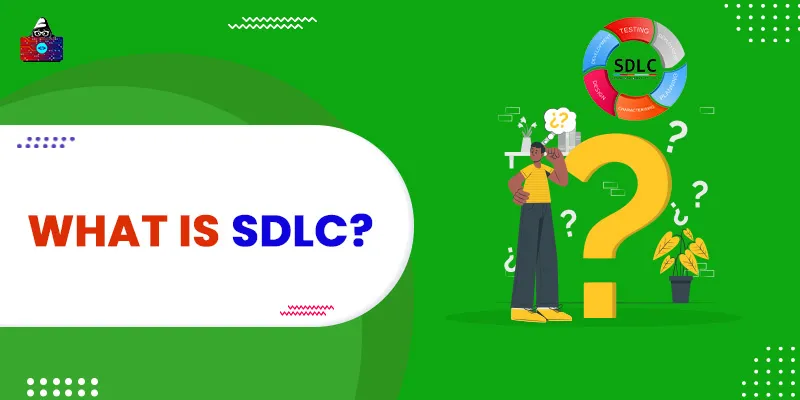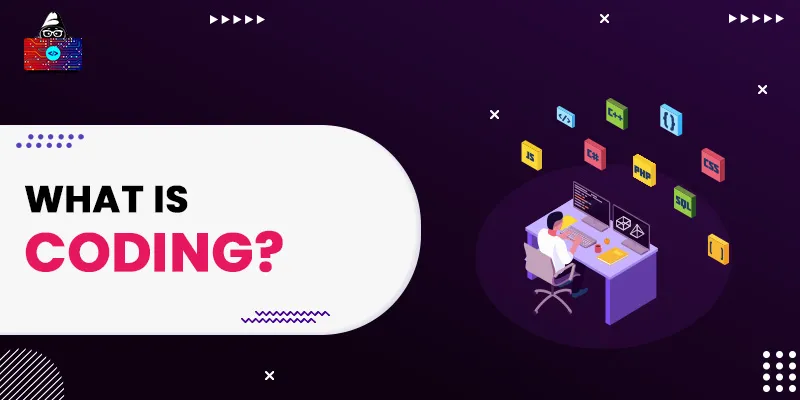When we create software on an industry level, we need to follow some steps in order to provide high-quality software to the User, and these steps include planning the software, testing it, designing, and lots more.
What is SDLC?
SDLC stands for Software Development Life Cycle, and you can say it is a process or a framework followed by the developers in industries to develop software that could stand on the customer expectation. Basically, all the big software companies work on SDLC patterns so they can build, design, develop, test, and high-quality research software.
This process also includes software testing , which is most important for a company before they release any software; the software should be fully tested and clear all kinds of tests. The main goal of adopting the SDLC process , the organization could complete its software-making process in a given interval of time and produce high-quality applications or software.
SDLC Phases
SDLC is divided into 6 phases which tell that it is used for teamwork. Why not? In big tech industries, they have many developers and non-developers teams for different kinds of work.
- Planning
- Software Requirement Specification:
- Designing the Product.
- Building or coding the product
- Testing the Product
- Deployment and Maintenance
1. Planning
This phase is the most important phase of the SDLC process because this phase decides the future of the software . In planning, experts work on the gathered information from the customer and plan according to the information. This phase mostly includes the non-developer community of the organization basically the expert on high post and organization decision-makers.
The planning of a product pertains to the customer's need, the cost for that product, product feasibility, and the product's long-term stability. Business analysts and product managers decide whether or not they need this product and once they get agree on it that they need, they set a time period and the resource cost for that product.
2. Software Requirement Specification
Once the planning is done, the next phase is to define and document the software needs. This phase deals with the documentation of the software, which includes cost, legal, operation feasibility, technical and time period for the software. Organizations use SRS ( Software Requirement Specification ) documents in which they mention all the relevant information about the project.
3. Designing
When the documentation for the product is done organization needs a design for the product, and the design should be efficient, which stands on client expectations and provides scalability to the product. The designing of a product is mainly concerned with the different components, security levels, modules, and different architectures of the software. Basically, the designing of software is done on pen and paper, and this decides the various interface of the software.
4. Building or Coding the product
Once the design of the product is confirmed, the next phase is to use code to build that product. In this phase, developers use their coding skills to make the product that is mentioned in the design. Here in this phase, the developer may use different programming languages to make a single product, and the product is divided into different modules, and each module is handled by different developers. The building of the product phase takes more time compared to other phases of the SDLC process.
Though the designing of a product is easy, implementing all those ideas in software using the code could be a head-scratching task. Organizations need well-skilled developers to complete the project in a given interval of time without compromising the quality of the product. Here in the Building phase developers do not have complete control over the project manufacturing they have to work under the guidelines and specific requests.
5. Testing
After the developers make the product, the company does not release it directly. First, it needs to pass all the tests. This is the important phase of the SDLC process because if the product is not reliable and contain bugs and customer use it, that could spoil the company's reputation. The product goes through all the adequate testing environments, and if the product fails, it would send back to the coding phase to overcome those shortcomings.
6. Deployment and Maintenance
If the product passes all the testing barriers, the company tries to deploy the product in the market. The deployment of the product matters a lot. It’s all about product deployment timing. It seems that products with great utilization and potential failed because of the release timing. The product should release when the customer and its market need it.
Once the product is released, it is not finished here. It requires regular maintenance because there are some failures and updates that the testing phase does not suggest, but time does. Once the product is released, the SDLC process starts again to maintain the product so the organization could get more and more profit from it.
SDLC Models
There are many SDLC models which are used to achieve the same goal, but all follow different approaches.
- Waterfall Model
- V-shaped Model
- Prototype Model
- Spiral Model
- Iterative Incremental Model
- Big Bang Model
- Agile Model
Why do we use the SDLC?
We use the SDLC process so we can develop software in a more efficient manner, and it reduces the risk of the project. This process helps to reduce the cost of the overall project, and well planning can give magnificent results.
People are also reading:





Leave a Comment on this Post